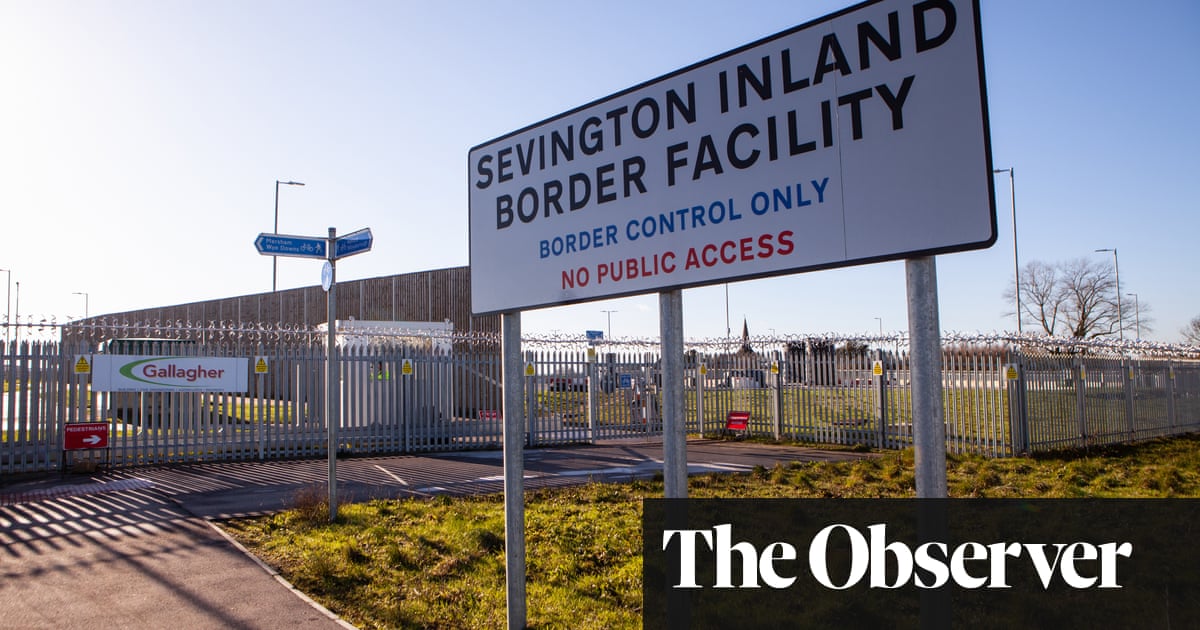
“Do you hear that?” asks Chris O’Shea, putting a finger in the air and looking out over a tangle of pipes and workers in orange hi-vis overalls.
A deep whirr punctures the calm of the east Yorkshire coast, as a huge engine powers up and prepares to suck thousands of cubic metres of gas from deep beneath the North Sea.
It is the first time that stored gas from Rough, a vast sandstone reservoir, has been pumped into the grid since 2017. Then, British Gas owner Centrica deemed its storage function “uneconomical”, and the government ignored calls to step in. Russia’s invasion of Ukraine, and its throttling of Europe’s gas supply, has changed all that, and allowed the 37-year-old storage facility to make an unlikely comeback.
“I promise this wasn’t staged,” says O’Shea, who is standing on a platform 100ft above the maze of metalwork that is the Easington gas terminal, which sucks the gas from Rough.
It is six months since the then business secretary Kwasi Kwarteng asked if Centrica could reopen Europe’s largest storage facility. The site, which has only been used to produce local gas for the last five years, is now 20% full, enough to heat about 1m homes.
Its reopening means the UK now stores nine days’ worth of gas, up from six, but still the lowest in Europe. Rough has been called into action because of “Dunkelflaute” conditions blanketing northern Europe: barely any wind or solar power available to generate electricity on grey, still days.
These conditions have thwarted O’Shea’s efforts to fly by helicopter to the Rough platform, 18 miles offshore.
He recounts trips offshore in early roles at the oil giant Shell,mistaking a tunafish for a shark on a rig trip in Nigeria. He is dressed in a trademark bright blue hoodie, with “join our Centrica pathway” on the front and “#netzerobattalion” on the back. Blink and you’d miss the millionaire executive with skin in the game of nearly every evolving energy story this week (see: costly bills, Sizewell C, Bulb’s takeover, windfall taxes, power cut frets).
The reopening of Rough is a line in the sand for O’Shea, who has championed owning energy generation assets over simply being a retail supplier since taking charge in April 2020, reversing former boss Iain Conn’s strategy.
The dash for gas after Russia’s invasion has raised questions as to why Britain has so little gas storage, and why ministers allowed Rough to halt its storage activities. Centrica had decided in 2017 that substantial investment was needed to make it safe at high pressures, with government support, to make it last a further 40 years. “Hindsight is a wonderful thing,” says O’Shea. “If we knew then what we know now, would it have been a different decision? Possibly.”
Storage sites make money by taking in gas when prices are low, typically in the summer, and pumping it back out when prices are high. But the fall in gas prices in recent weeks has meant Centrica has been able to refill relatively cheaply. Investec analysts estimate reopening Rough could be worth as much as £5m a day.
Rough sits below the resource-rich southern North Sea, where rigs routinely compete with windfarms and fishing boats for space. The sea is 36m deep, and Rough is 3km below that. A 30km-square sandstone reservoir, it is twice the size of Lake Windemere. It is connected to pipelines via 24 ever-narrowing straws. On the surface is a rig capable of housing more than 100 workers.
Despite Britain’s drive to wean itself off fossil fuels, it is viewed as a giant insurance policy for the energy network. Executives argue its mere presence as part of the gas network “takes the froth” off prices. Centrica says it could have saved customers £2.4bn, or £88 each, last winter had it been active then.
The FTSE 100 firm has funded this winter’s call to action, but O’Shea wants government support to secure its future. He estimates it would cost £150m to double its capacity to 60bn cubic feet by next winter. Longer-term, £1bn is needed to ramp up its methane capacity, and £2bn to fit the toughened steel needed for what Centrica hopes will be its next stage of life: the world’s largest hydrogen storage facility. The refit could take five to seven years if it is kept open during the work.
“In order to invest, companies need to understand they can make a return and at the moment there is no confirmed model for hydrogen. We don’t need any government money and have never asked. We’re looking for the right regulatory framework,” he says. O’Shea hopes a “cap and floor” model guaranteeing revenues in tough times and returning windfall profits to taxpayers can be created for hydrogen.
Is the current focus on gas obscuring the need to focus on green energy? “I think that long-term security of supply and decarbonisation can actually be complementary. They’re not mutually exclusive,” he says.
He argues hydrogen is vital for decarbonising industrial Humberside and Teesside – the worst polluting areas of the UK and home to sites such as Scunthorpe steelworks.
Entering Easington, it is easy to see the hallmarks of state ownership (British Gas was privatised under Margaret Thatcher in 1986). Over the fence lie the assets separated off in privatisation, now with fellow FTSE 100 company National Grid, that handle gas from Norway and the North Sea.
On the wall, a projection shows the live status of each piece of machinery from the “pig tray” (a big bowling ball that squeezes liquid out of the pipeline) to the “slug catcher”, which helps further purify the methane.
Ministers hope Rough’s extra supplies can complement other measures to reduce pressure on the energy supplies this winter – from putting coal plants on standby to National Grid incentivising firms and consumers to cut energy usage.
The British Gas pilot of this scheme launches on Thursday. Called Peak Save, consumers with smart meters can receive about £4 for every unit of electricity they save compared with their normal usage. About 100,000 households are likely to participate and could save £100 between December and March, it estimates. “This approach to help manage residential electricity demand is likely to become a major feature of the market in years to come,” O’Shea says.
The Scotsman neatly packs away his personalised overalls and tucks a can of Irn-Bru into his jeans pocket, before heading off to tackle whatever the energy crisis has to throw at him next.












